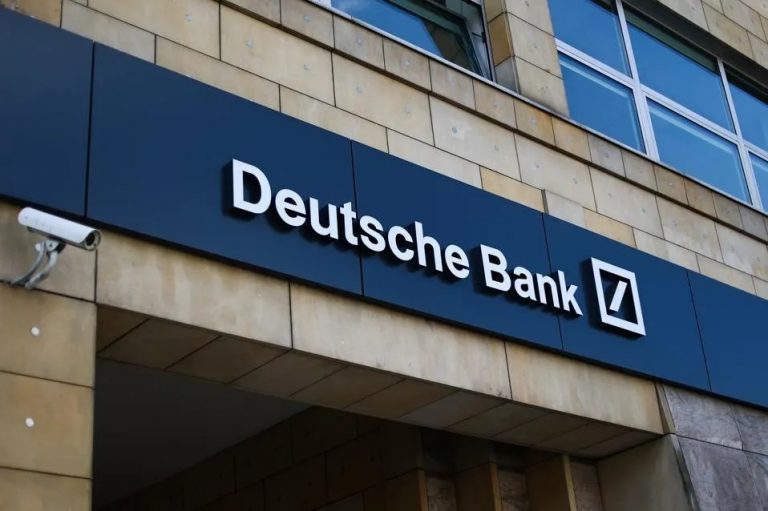
Deutsche Bank is exploring the possibility of launching its own stablecoin or joining an industry-led initiative, as reported by Bloomberg on June 6, 2025, citing Sabih Behzad, the bank’s head of digital assets and currencies transformation. The bank is also considering developing a tokenized deposit system to enhance payment efficiency. This move aligns with growing regulatory clarity, particularly in the EU with the MiCA framework and pending U.S. stablecoin legislation, which is driving mainstream adoption.
Deutsche Bank’s interest reflects a broader trend among major financial institutions, including U.S. banks like JPMorgan and Citigroup, exploring stablecoins to improve transaction speeds and compete with cryptocurrency firms. However, no final decision has been confirmed, and plans remain in early stages. Deutsche Bank’s entry into the stablecoin market would further legitimize cryptocurrencies in traditional finance, signaling confidence from a major global bank. This could encourage other institutions to follow suit, accelerating the integration of digital assets into mainstream financial systems.
A stablecoin backed by a reputable institution like Deutsche Bank could attract institutional and retail users wary of crypto volatility, offering a stable, regulated alternative to existing stablecoins like USDT or USDC. Deutsche Bank’s involvement could push regulators to expedite clear frameworks, such as the EU’s MiCA or U.S. stablecoin legislation, to accommodate institutional players, fostering a more stable crypto ecosystem.
Register for Tekedia Mini-MBA edition 19 (Feb 9 – May 2, 2026): big discounts for early bird.
Tekedia AI in Business Masterclass opens registrations.
Join Tekedia Capital Syndicate and co-invest in great global startups.
Register for Tekedia AI Lab: From Technical Design to Deployment (next edition begins Jan 24 2026).
A Deutsche Bank stablecoin or tokenized deposit system could streamline cross-border payments and settlements, reducing costs and delays compared to traditional banking systems. This aligns with their reported goal of enhancing payment efficiency. It could integrate with existing blockchain networks, enabling seamless transactions across DeFi platforms, traditional banking, and corporate clients. By leveraging blockchain, the bank could lower operational costs for payments and custody, potentially passing savings to clients.
Deutsche Bank’s stablecoin could compete directly with established players like Tether and Circle, potentially capturing market share due to its institutional backing and regulatory compliance. This move could pressure competitors like JPMorgan (with its JPM Coin) or Citigroup to accelerate their digital asset strategies, intensifying competition in the financial sector. A trusted stablecoin could attract new users to digital assets, expanding the market for blockchain-based financial services.
Stablecoins face intense regulatory oversight due to concerns over financial stability, money laundering, and consumer protection. Deutsche Bank would need to navigate complex compliance requirements globally. Developing and maintaining a stablecoin involves cybersecurity risks, blockchain vulnerabilities, and the challenge of ensuring 1:1 asset backing. Any missteps, such as technical failures or regulatory violations, could harm Deutsche Bank’s reputation, given its prominence.
The potential launch of a Deutsche Bank stablecoin highlights a divide between traditional finance (TradFi) and decentralized finance (DeFi), as well as varying stakeholder perspectives. A Deutsche Bank stablecoin would likely be centralized, backed by fiat reserves and managed under strict regulatory oversight. This contrasts with DeFi’s ethos of decentralization, where stablecoins like DAI are algorithmically managed or community-governed.
TradFi-backed stablecoins prioritize institutional and corporate users, potentially limiting access for retail users compared to DeFi stablecoins, which are open to anyone with a crypto wallet. TradFi institutions move cautiously due to regulatory and reputational concerns, while DeFi projects innovate rapidly, often outpacing banks in functionality but lacking their stability and trust. Banks see stablecoins as a way to modernize payments and stay competitive, while regulators view them as a potential risk to monetary policy and financial stability, creating tension over oversight.
Some crypto enthusiasts may welcome institutional adoption as validation, but others, particularly DeFi advocates, may criticize TradFi stablecoins as undermining blockchain’s decentralized principles. Businesses could benefit from faster, cheaper transactions but may be skeptical of adopting a bank-backed stablecoin if it lacks interoperability with DeFi ecosystems or faces regulatory uncertainty. Retail users might prefer a Deutsche Bank stablecoin for its perceived safety but could be deterred by fees, limited access, or lack of integration with decentralized platforms.
In developed markets like the EU and U.S., clear regulations (e.g., MiCA) could make Deutsche Bank’s stablecoin viable, while emerging markets with less regulatory clarity might face adoption hurdles. Countries with high crypto adoption (e.g., parts of Asia or Latin America) may favor existing stablecoins like USDT, while regions with low adoption might see a bank-backed stablecoin as a safer entry point. Central banks may worry about private stablecoins undermining fiat currencies, especially if widely adopted. Deutsche Bank’s involvement could amplify these concerns, given its global reach.
While stablecoins could improve access to financial services in underbanked regions, a bank-led stablecoin might prioritize corporate clients, potentially widening the gap between institutional and retail users. Deutsche Bank’s potential stablecoin launch could bridge TradFi and DeFi, driving efficiency and mainstream adoption while intensifying competition.
However, it also underscores a divide between centralized and decentralized finance, with differing priorities around control, accessibility, and innovation. The success of such a stablecoin will depend on regulatory clarity, technological execution, and its ability to balance institutional trust with broader market needs.



